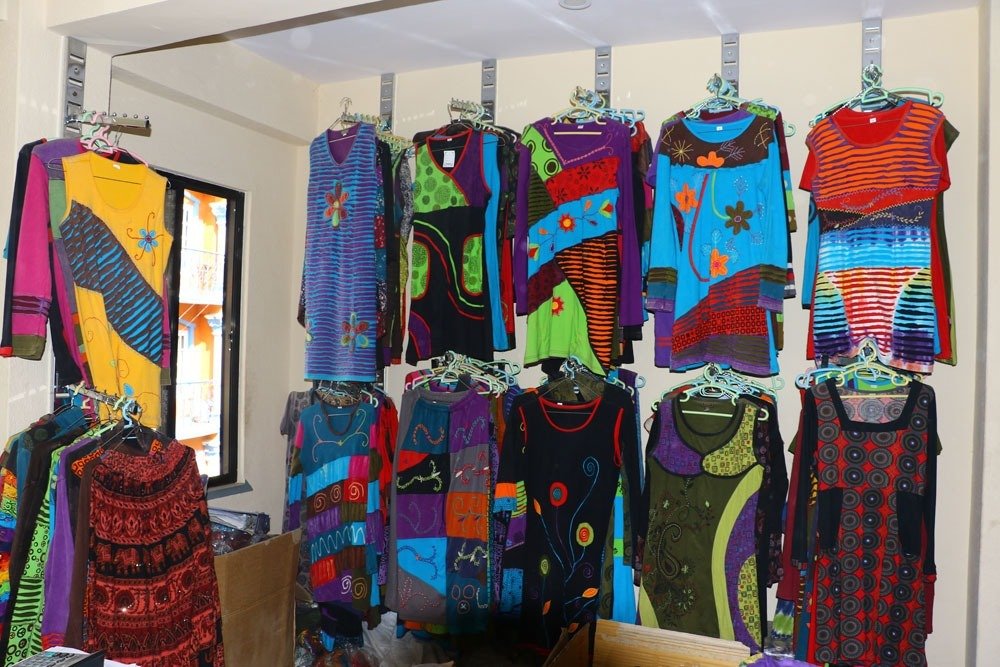
Introduction
The Nepal Hippie Clothing Industry is one of the most fascinating and culturally rich sectors in South Asia. Known for its vibrant textiles, handwoven fabrics, and unique bohemian-inspired designs, this industry has gained worldwide recognition for blending Nepalese traditions with modern hippie fashion. From the bustling streets of Kathmandu’s Thamel to global online marketplaces, Nepalese hippie clothing has created a niche that attracts travelers, fashion enthusiasts, and businesses alike.
This article explores the origins, growth, craftsmanship, and global reach of the Nepal hippie clothing industry while highlighting its role in promoting sustainability, cultural identity, and fair trade.
Table of Contents
Origins of Hippie Clothing in Nepal
The roots of hippie clothing in Nepal date back to the 1960s and 1970s, when Nepal became a major stop on the “Hippie Trail.” Western travelers seeking spirituality, peace, and alternative lifestyles were drawn to Kathmandu, particularly the area known as Freak Street (Jhochhen Tole). Local artisans began producing colorful, free-spirited clothing styles inspired by traditional Nepalese fabrics, which quickly resonated with the hippie movement.
The blend of Tibetan patterns, handwoven cotton, hemp, and tie-dye designs became iconic symbols of freedom, nature, and simplicity. What began as a small-scale local craft soon grew into a significant industry with international demand.
Materials and Craftsmanship
The strength of the Nepal hippie clothing industry lies in its handcrafted quality and natural fabrics. Local artisans and family-run workshops use eco-friendly methods that emphasize sustainability and durability.
Common Materials:
- Hemp – Popular for its strength, eco-friendliness, and natural texture.
- Cotton – Lightweight and breathable, ideal for casual hippie wear.
- Wool – Especially from the Himalayan sheep and yaks, used in ponchos, sweaters, and shawls.
- Recycled Fabrics – Patchwork and upcycled materials, reinforcing the bohemian spirit.
Signature Features:
- Tie-dye shirts and dresses.
- Handwoven jackets and ponchos.
- Patchwork pants, skirts, and bags.
- Embroidered symbols such as Om, mandalas, or Buddhist motifs.
- Loose, comfortable cuts reflecting freedom and individuality.
Each item reflects the artistry of Nepalese craftsmanship, combining practical wearability with spiritual and cultural expression.
Role in the Local Economy
The Nepal hippie clothing industry is not only about fashion—it is also a pillar of the local economy. Thousands of small-scale artisans, cottage industries, and exporters are engaged in production, contributing significantly to employment and trade.
- Employment Generation – Many rural communities, especially women, are employed in weaving, stitching, and embroidery.
- Tourism Contribution – Travelers visiting Nepal often buy hippie clothing as souvenirs, which sustains local shops.
- Export Growth – Countries like the USA, UK, Australia, Germany, and Japan are major importers of Nepalese hippie clothing.
The industry thrives on fair trade principles and handmade authenticity, giving it a competitive edge over mass-produced alternatives.
Global Popularity and Exports
Nepalese hippie clothing has become a global fashion statement. Retailers and wholesalers source clothing directly from Kathmandu and Pokhara to supply stores and online platforms worldwide.
Why Global Audiences Love Nepalese Hippie Clothing:
- Unique Aesthetic – Vibrant colors, spiritual motifs, and bohemian patterns.
- Eco-Friendly Appeal – Hemp and natural fibers align with sustainable fashion trends.
- Cultural Authenticity – Clothing reflects Buddhist and Hindu influences.
- Affordability – Compared to Western bohemian brands, Nepalese hippie clothing offers quality at competitive prices.
Exporters often collaborate with Western brands that emphasize ethical sourcing and sustainability, further boosting demand.
Sustainability and Ethical Practices
In today’s world, sustainability is not just a trend—it is a necessity. The Nepal hippie clothing industry aligns naturally with eco-conscious practices:
- Use of organic hemp and cotton.
- Handmade production reduces carbon emissions.
- Recycling and upcycling fabrics into patchwork clothing.
- Support for local artisans ensures fair wages and preserves cultural traditions.
This sustainable framework has made Nepalese hippie fashion highly appealing to environmentally conscious consumers in Europe and North America.
Challenges Facing the Industry
Despite its growth, the Nepal hippie clothing industry faces several challenges:
- Global Competition – Mass-produced bohemian clothing from China and India affects pricing.
- Lack of Modern Marketing – Many local producers struggle to access global e-commerce markets.
- Logistical Barriers – Transportation and export infrastructure in Nepal can limit timely deliveries.
- Intellectual Property Issues – Copycat designs often dilute the authenticity of Nepalese products.
Overcoming these challenges requires modernization, stronger branding, and greater emphasis on storytelling that highlights Nepal’s unique craftsmanship.
Future of Nepal’s Hippie Clothing Industry
The future looks promising as demand for ethical, bohemian, and sustainable fashion continues to rise worldwide. By leveraging digital platforms, social media marketing, and fair-trade certifications, Nepalese businesses can expand their reach globally.
Emerging trends such as slow fashion, eco-fashion, and handmade authenticity place Nepal at an advantage. With proper government support, branding initiatives, and training for artisans, Nepal can strengthen its position as a global hub for hippie and bohemian fashion.
Conclusion
The Nepal Hippie Clothing Industry is more than just a fashion business—it is a cultural legacy that bridges tradition with modern global trends. From the colorful streets of Kathmandu to international fashion stores, Nepalese hippie clothing tells a story of spirituality, sustainability, and craftsmanship.
Despite challenges, the industry has proven resilient and continues to evolve with global demand for eco-friendly and bohemian fashion. For travelers, entrepreneurs, and fashion lovers, Nepal remains a vibrant source of inspiration and ethical clothing.
FAQs on Nepal Hippie Clothing Industry
Q1: What makes Nepal hippie clothing unique?
Nepal hippie clothing is unique for its handcrafted designs, natural fabrics like hemp and cotton, spiritual motifs, and cultural authenticity.
Q2: Where can I buy Nepal hippie clothing?
You can find them in local markets like Thamel (Kathmandu) and Lakeside (Pokhara), as well as global e-commerce platforms supplied by Nepalese exporters.
Q3: Is Nepal hippie clothing sustainable?
Yes. The industry largely uses eco-friendly fabrics, handmade production methods, and recycled materials, aligning with sustainable fashion principles.
Q4: Who are the main buyers of Nepal hippie clothing?
Tourists visiting Nepal, wholesalers, and global retailers catering to bohemian, hippie, and eco-conscious fashion markets.
Q5: How does the industry support local communities?
The industry provides employment, especially to women and rural artisans, while promoting fair trade and preserving traditional weaving and embroidery skills.
